

What Can You Bring Into San Diego Zoo? — Food? Drink? Pets?
What are you allowed to bring into the San Diego Zoo? Which food, drink, coolers, strollers, luggage, camera equipment or pets are ok? After a few calls and a lot of reading, here’s what I found out.
San Diego Zoo permits bringing in items that are animal-safe. Food and non-alcoholic drinks are ok. No straws or glass containers. Coolers, strollers & luggage are fine but must be sized correctly or stored. Camera accessories like tripods must be compact. No pets, only working service animals.
Read on for more details. Some of the Zoo’s requirements are not intuitively obvious because of its status as a quarantine facility for endangered species. And even if you cannot bring certain things into the Zoo, I’ve found alternatives that may work for you.
If you make purchases through the links in this post, I may be compensated. Read my Advertising Disclosure for more info. Thanks! ~ Nancy
* Save with a secret promo code on each San Diego Zoo or Safari Park 1-Day Pass. Go any day. Go directly to the gate. Click HERE to get your code, instructions & discounted tickets by email. By clicking the link above you agree to receive an automated email message. Valid only at aRes Travel , San Diego’s local authorized ticket seller. Read my full privacy policy .

Outside Food Is Ok to Bring Into the San Diego Zoo
You can take any personal food into the Zoo that a single person can carry, within reason. It’s a great way to save money because Zoo food can be rather expensive (looking for more savings? Check out my San Diego Zoo cheap tickets page). Bring in items like sandwiches, chips, restaurant take-out containers, even yesterday’s casserole in Tupperware. However…
There are no food storage facilities for the edibles that you bring into the Zoo.
You should have no trouble taking food inside the Zoo if:
- Food is pre-prepared and ready to eat.
- Consumption is unlikely to disturb their animals or other guests. No flaming desserts , ok?
- Each person is only taking in enough food for one, or at most two meals for themselves—and anyone in their group who cannot carry their own.
If you decide that you want to buy a meal or get a snack in addition to the food that you’ve carried in, there’s plenty of good choices. Here’s a link to an article that I wrote on the best food at San Diego Zoo .
What you’d rather eat outside of the zoo? Here’s another page on this website where you can find the best places for you to eat in Balboa Park .

You Can Carry Water Bottles and Other Drinks into the San Diego Zoo
Take your favorite water bottle with you into the Zoo. Bring that venti sized Starbucks mocha Frappuccino inside the gates. And that unfinished Gigantor Gulp cup of soda from a corner store is ok too. Let your child bring in their favorite sippy cup. All of these are allowed.
However, you cannot bring in the following :
- No alcoholic beverages or containers
- No glass containers
Small Food Coolers and Containers are Ok to Bring into San Diego Zoo
A 6-pack-sized cooler carried either in your hand, on a shoulder strap, or within a backpack is ok. Small Tupperware-style containers with individual portions are also allowed.
If you’re looking for a well-designed small cooler for your San Diego Zoo picnic try the Jaxx FitPak Insulated Cooler Lunch Box . It’s got more than 2,700 reviews on Amazon with a high rating.
I was surprised at how good a value it is. It’s got 6 seal-able, leak-proof containers. There are 2 one-cup sized smaller ones and 4 two-cup ones. There’s also an ice pack to keep them all cool. It also has a 28-ounce beverage container/shaker with an agitator for mixing shakes. It’s durable and easy to carry.
Large family-sized coolers are not allowed inside the park . Keep them inside your car and retrieve them when you’re ready to eat. There’s a picnic area set up outside the Zoo. Get your hands stamped for re-entry. That way you and your group can go outside, feast on your provisions then return to complete your visit.
NOTE: The usual picnic area is fenced off due to the construction of the new children’s zoo. Until the picnic is open again I suggest that you take your group to the plaza within Spanish Village Art Center. I’ve drawn a path showing you how to get there on the Google map above.
It’s only a short 2-minute walk away. The colorful artists’ colony is a wonderful attraction all by itself. They have umbrella-covered tables in the central patio. And it doesn’t hurt that everything at Daniel’s Coffee (also located in the patio) is terrific.
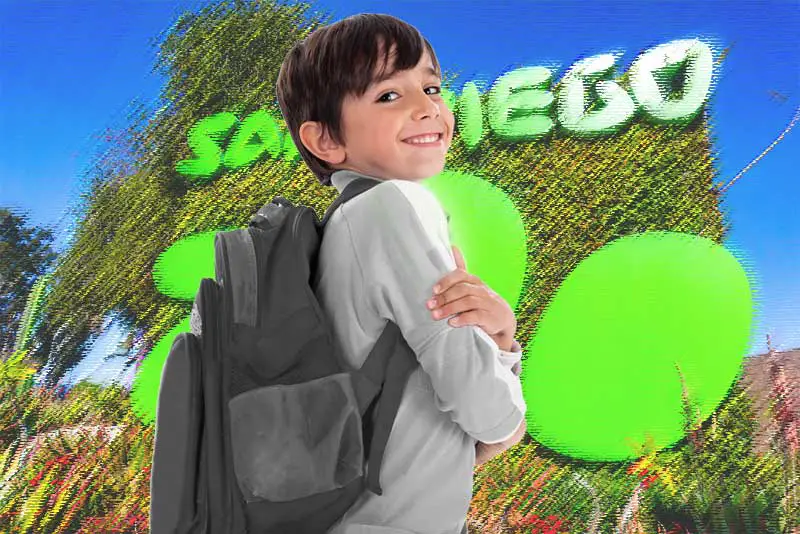
Backpacks Are Allowed Inside San Diego Zoo
You can bring almost any standard-sized backpack into the zoo , from your little tyke’s rucksack to models with child seats in them. Call 619-231-1515 if you are concerned that your backpack may be too large. You can always store it in the Zoo’s Luggage storage.
You may have to leave a larger backpack in a secured storage area if you wish to ride the Guided Tour Bus , Inside Look Tours, or Discovery Tours (check HERE for discounted tour deals). And you’ll have to take it off to ride the Kangaroo Bus and the Skyfari.
If you can live with those conditions, then you’ll be happy that you brought your backpack.
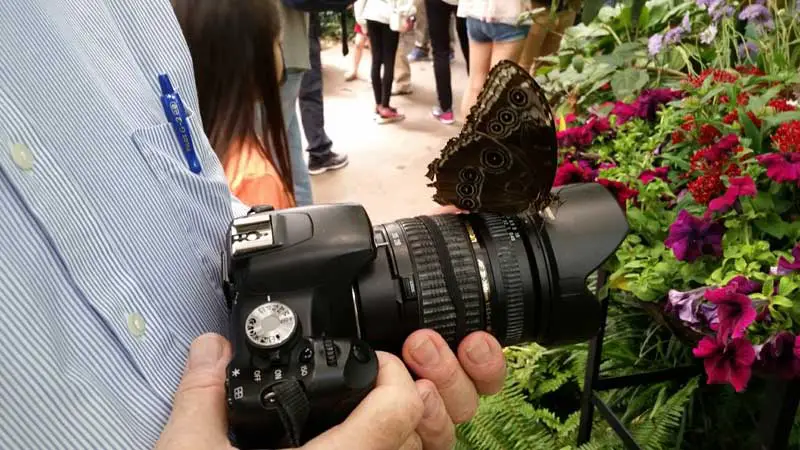
What Camera Equipment Can You Bring into the San Diego Zoo?
Bring your camera, the photos you get will be amazing! You can bring any accessories, tripods or monopods into the Zoo as long as they’re small enough (or collapsible) to fit into a standard-sized backpack.
To keep yourself out of overwhelm, check out my page on the San Diego Zoo’s best animal exhibits and attractions . Because there’s way too many to visit them all in one day.
Camera & Photo Policy : Professional photographers and videographers who intend to use any images taken within the Zoo commercially must get prior permission from authorized San Diego Global representatives. This includes taking photos or footage of any people, branded icons or anything on the San Diego Zoo Global property. To get permission email them here or call them at 619-231-1515 .
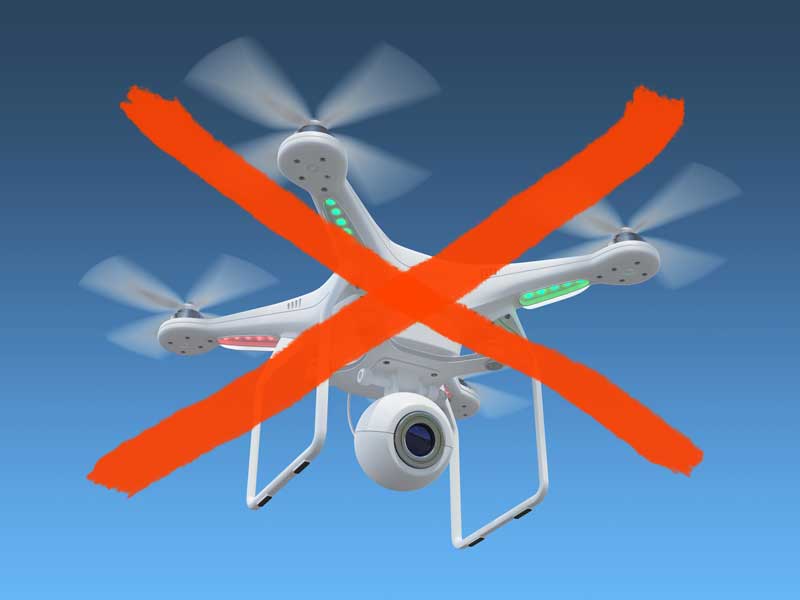
Drones cannot be brought into the Zoo
Drones (or flying toys) and aerial photography are not permitted at San Diego Zoo. There are at least 3 good reasons for this according to Federal Aviation Administration rules :
- The Zoo is less than 3 miles as the crow flies to Lindbergh Field airport. Federal Aviation Administration rules state that drones cannot fly within 5 miles of an airport without prior approval from the airport operator.
- San Diego Zoo is responsible for keeping their animals healthy and calm (which is why you can’t hold a koala there ). A drone buzzing their enclosure may make animals nervous or agitated. The big cats or elephants might get ticked off enough to knock an offending drone out of the sky if they can reach it. And then they could get injured trying to bite or otherwise incapacitate the “intruder”.
- FAA rules state that you are not supposed to fly a drone over groups of people.
Just know that drones are forbidden unless you get authorization from the Zoo and the airport operators.

Bring Your Big Stroller Into the San Diego Zoo
The San Diego Zoo allows almost any kind of baby carriage, kid wagon, pram, or perambulator inside the grounds. They also have baby stroller rentals on-site (see Luggage section below). But if you plan to ride any of the extra paid tours, buses or the Skyfari gondola there are a few things to keep in mind.
Guided Tour Bus If you’re going to take this 35-minute narrated round-trip tour you’ll have to leave your baby carriage inside the designated parking area. This is not a problem because the tour is a loop and you can pick it up at the end. While you’re on the double-deck bus keep your child on your lap.
The Skyfari /gondola has stroller size limits. For one-way trips, all baby carriages must fold smaller than 23.75 inches (60 cm) wide. Larger jogging, double stroller models or those rented from the Zoo will have to be left in the parking space close to the tram. You’ll have to make your Skyfari a round trip in that case.
Discovery Cart & Inside Look Tours You cannot bring your stroller with you on the carts. But the Zoo has a nearby parking place for them. You can pick it up when you’re finished with your tour. hcirluycnan. You will be asked to keep infants and toddlers in your lap or sitting beside you while you’re on the cart.
What’s the San Diego Zoo Bag Policy?
You can take your luggage or travel bags into the San Diego Zoo. But you’ll have to store them. You can’t drag them around with you while you visit the animals.
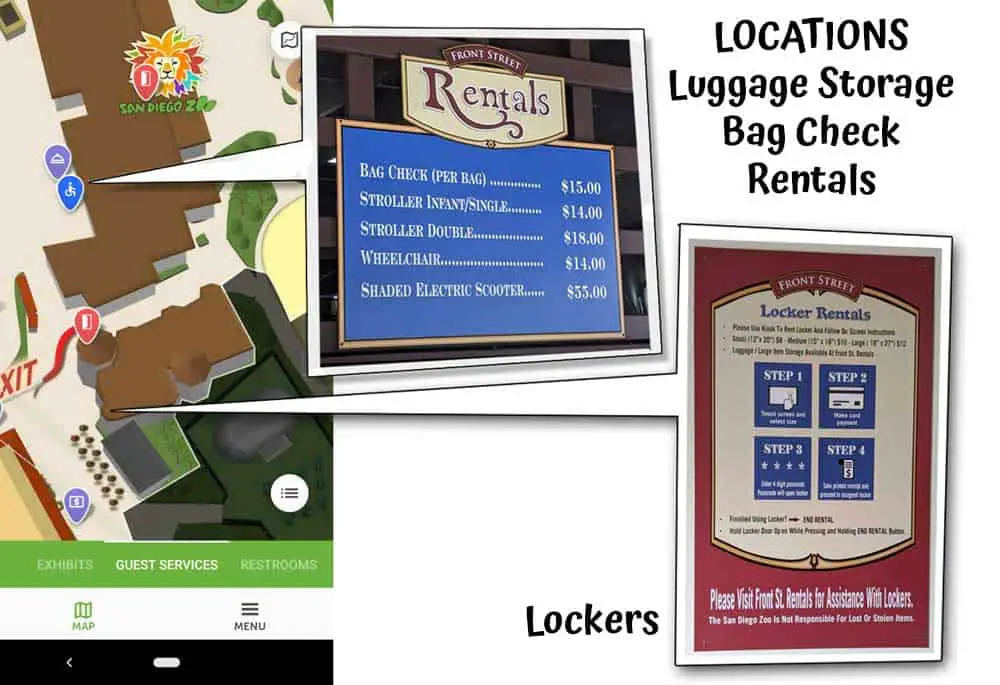
Luggage/large-item storage is available at Front Street Rentals. Smaller bags or backpacks can be placed in rented lockers. The locations of both of these are found if you take a left on Front Street after you enter. See the map and photos above.
The lockers may be hard for you to find. They’re to the right of San Diego Craft Beer & Margaritas .
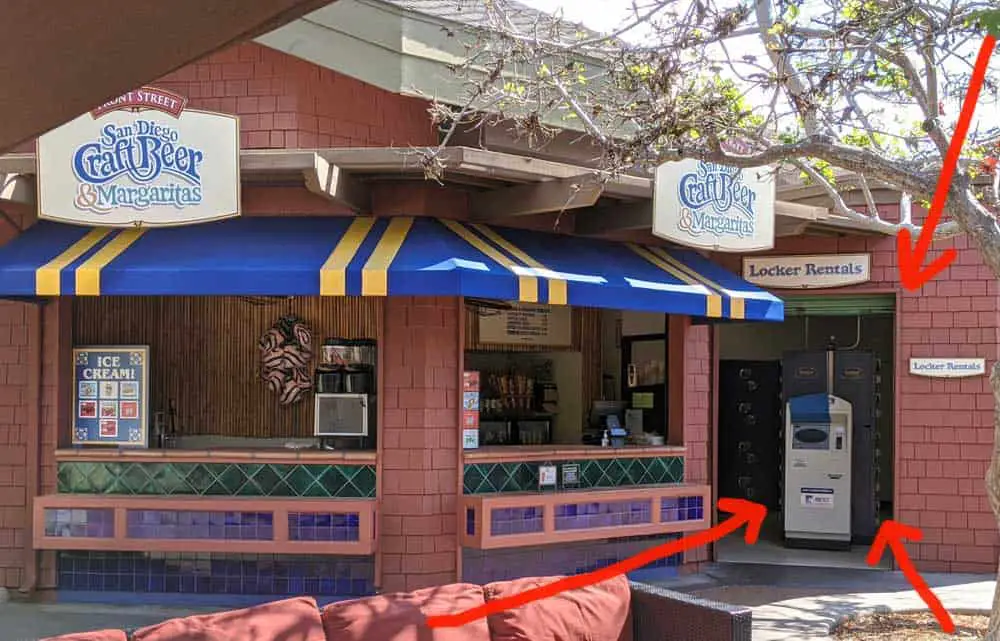
Locker rental payment is by credit card only because it is done with an automated kiosk. All bags must be picked up before the Zoo closes. They will not be kept overnight.
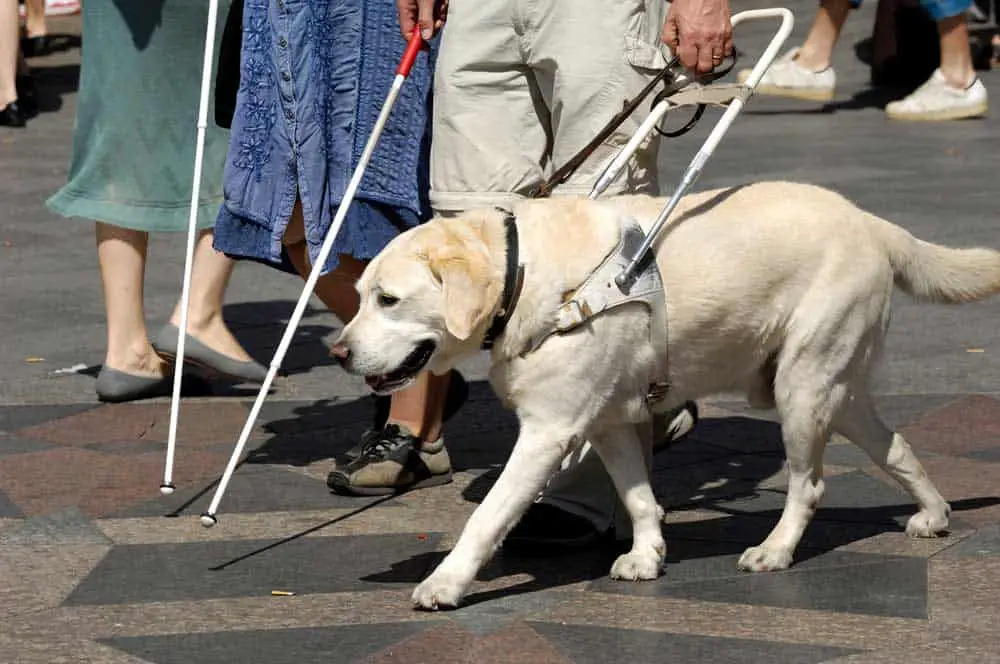
Which Pets are Allowed Inside San Diego Zoo?
You can only bring your pet into the Zoo if it’s a working service animal . Emotional support, comfort animals, or service animals still in training are not allowed.
There are 2 reasons for this. Both the Zoo and Safari Park are considered quarantined facilities because they are home to many rare and endangered species. And also the zoo is full of wild animals which may by scent, sound, or sight trigger aggressive or erratic behavior in pets.
Do NOT leave your pets in your car in the Zoo’s parking lot . If you’re visiting San Diego with your pet, leave them with friends or relatives, at an animal daycare center, or in your hotel room while you visit the Zoo.
San Diegans are very conscious of the dangers of leaving pets in cars, especially zoo-goers. Even if you think that it is not going to get warm enough to harm your animal, a passer-by might. And they will call the police. You will probably return to a busted-out window in your vehicle and an expensive ticket…if you’re lucky.

Animal Day Care Services Close to San Diego Zoo
Here are 3 nearby facilities that will care for your pet for the day. All of them have certain vaccination requirements that you may want to read now. They all also have a short temperament test before you are allowed to leave your pet with them. Contact each care facility at least 4 days before you plan to arrive.
Dog Days (6:30 AM – 7:30 PM). Group play environment. Totally FREE for 1st day (see HERE for requirements)
- 619-546-8390
- 811 13th St, San Diego, CA 92101
- DogDaysSanDiego.com
Bark Boulevard (6 AM – 10 PM). Group play environment or individual private care for less socialized dogs.
- 619-255-0980
- 2144 El Cajon Blvd, San Diego, CA 92104
- See their requirements .
- BarkBoulevard.net
Camp Run-A-Mutt (7 AM – 7 PM). Group play environment.
- 619-873-4932
- 3265 India St, San Diego, CA 92103
- See their requirements HERE .
- CampRunaMutt.com/missionhills

Pet-Friendly Hotels Close to San Diego Zoo
Here are 4 pet-friendly hotels that are about 3 miles from the San Diego Zoo. They do not have on-site animal daycare facilities. But all will allow your pet to stay in your room while you are visiting the Zoo.
Kimpton Hotel Palomar San Diego welcomes any pet, regardless of size, weight, or breed for no additional fees or deposits. This is an updated and renovated urban chic hotel with a rooftop pool and a lively Mexican restaurant.
Some of the rooms have spectacular San Diego Bay views with balconies. But to get one of these you’ll need to talk to a human being. Call the aRes Travel Reservation Center ( 800-719-8961 ). Tell them that you want to book one of the “Skyline View” rooms at the Kimpton Hotel Palomar in San Diego. These rooms are all on or above the 16th floor.
- 2.4 miles to San Diego Zoo by car (9 minutes)
- 2 miles walking distance to the Zoo (37 minutes)
The Keating Hotel allows dogs up to 25lbs for just a $25/night fee. I like this hotel’s architecture. They renovated and modernized the interior of one of the oldest buildings in San Diego. But they left the old-fashioned 1890’s facade intact. They also kept some interior details like old brick walls, wood banisters, and a large skylight over the main lobby.
- 2.6 miles to the San Diego Zoo by car
- 2.2 miles walking distance to Zoo
Motel 6 San Diego Downtown is a budget-priced option where service animals and well-behaved pets always stay free. All pets and Service Animals need to be declared at check-in. The rooms are clean, if not terribly stylish. And they have free parking, which is almost as rare as a rhino in downtown San Diego.
- 2.1 miles to the San Diego Zoo by car
- 1.8 miles walking distance to the Zoo
Town and Country Resort is a family-friendly, budget lodging that I reviewed HERE . It’s been a San Diego vacation destination since the 1960s. It’s been recently renovated with a mid-century surfer vibe. If you have kids they’ll love the Twister water slide, kiddie pool, and games.
Pet-Friendly Downtown San Diego Restaurant – Whichever of these hotels you stay in, I recommend going to Werewolf for a lip-smacking breakfast or brunch. Kids and critters are welcome. Weekends are always busy. Use their Waitlist at the bottom of their home page so you don’t end up standing in line too long.
It’s also open 3 PM – 2 AM on Thursday, Friday, and Saturday. They serve salads, burritos, burgers, and appetizers then.
What Items are Not Permitted in the Zoo?

The Zoo has posted an extensive list of items that are not allowed in the San Diego Zoo or Safari Park. Check this link on the Zoo/Safari Park FAQ page under FACILITIES & SERVICES for the latest additions. If you have any questions about whether you can bring any item into either attraction, call 619-231-1515 . ,
Closing Thoughts
The primary aim of the San Diego Zoo is to end extinction through conservation and education. Anything that would interfere with that aim will be forbidden. You’ll be ok if you keep that in mind when carrying anything into the Zoo. And don’t hesitate to contact them and ask if you should bring something else into the San Diego Zoo.
Nancy Ulrich
I'm nuts...about animals, polymer clay, mixed media art & husband Bob. Happily planted in San Diego among good friends, family that I would have chosen if given the choice and optimism for a bountiful future for us all.
Recent Posts
Discover the Best Hotels Near San Diego Zoo Safari Park in Escondido 2024
I've got the scoop on the best hotels near San Diego Zoo Safari Park in Escondido for 2024. These highly-rated spots offer awesome amenities and prime locations. Plus you can score a 20% discount....
3 Best Kid-Friendly Hotels Near San Diego Zoo on a Budget
Discover the top kid-friendly hotels near the San Diego Zoo that are affordable too. My chart compares cost, distance, and number of family amenities. Reviews with room tips help you choose the best...

Save $10+ Per Ticket For Universal Studios Hollywood (Limited Time Offer)

What Is San Diego Zoo's Bag Policy? | Rules & Tips
Like many zoos, theme parks and attractions across the country, the San Diego Zoo has a bag policy in which every guest must follow.
We've detailed in this guide what types of bags are allowed into the San Diego Zoo as well as what types of backs won't be allowed through the gates!
Questions We'll Answer About San Diego Zoo's Bag Policy:
What types of bags are prohibited at the san diego zoo.
- What Types of Bags are Allowed at the San Diego Zoo?

Luggage suitcases of any kind will typically not be allowed into the San Diego Zoo.
This includes both large suitcases and carry-on size suitcases - if it's any sort of travel bag with wheels you'll likely not be allowed to bring it into the zoo with you.
You also won't be able to bring in travel bags for golf clubs, tennis racquets and most sporting equipment.

San Diego Zoo does offer luggage storage for a fee though if you absolutely need to bring your suitcases with you.
If you're going straight to the airport from the San Diego Zoo then having them store your luggage is a decent option, but keep in mind there is often a lengthy walk from the parking lots to the actual entrance of the zoo.
Coolers are generally allowed into the San Diego Zoo, cannot be larger than six pack size.

You are welcomed however to keep your large coolers in your car and then enjoy any food/beverage inside the cooler on the tables located right outside the zoo's front gates.
Any sort of glass containers or carrying cases will also not be allowed into the San Diego Zoo.
What Types of Bags are Allowed at the San Diego Zoo?
Most types of small and medium sized bags are allowed at the San Diego Zoo.
Purses, handbags and satchels can generally be brought into the San Diego Zoo without any issues.

Lunchboxes and coolers are allowed into San Diego Zoo with some restrictions to keep in mind that we detailed in the previous section.
Backpacks and duffle bags may be brought into the zoo as well!
RELATED ARTICLES
Best Tips for San Diego Zoo
San Diego Zoo Discount Tickets
What Can You Bring Into The San Diego Zoo?
Can You Bring Food Into the San Diego Zoo?
San Diego Zoo Stroller Rental Guide
What is San Diego Zoo's Pet Policy?
- choosing a selection results in a full page refresh
- Meeting Planners
- Meet the Team
- Services & Resources
- Service Providers
- Hotel & Venue Search
- Convention Center
- Travel Trade
- San Diego Specialist
- Trade Offers
- Request Images
- Hosting Assistance
- Press Releases

San Diego Zoo Safari Park
Jambo a safari adventure in san diego.
Welcome to the San Diego Zoo Safari Park, where life-changing moments happen daily. Set out on safari and discover 1,800 acres of sprawling savannas teeming with wildlife as well as world-class botanical gardens—there’s no place like it on Earth. Encounter rhinos, giraffes, wildebeest, and large herds of wildlife roaming together. Journey through bamboo forests and come face-to-face with Sumatran tigers. Hop alongside kangaroos and dive underwater to meet the only two platypuses outside of Australia. And experience the awe-inspiring giants of Elephant valley. When you’re here, you’ll discover adventure is in every moment. And a moment can change a lifetime.

Neighborhood: North Inland
15500 San Pasqual Valley Rd Escondido, CA 92027-9614
Contact Info
(619) 718-3000 Toll-Free: (800) 407-9534
Please check our website for current hours.
Spring Safari Featuring Butterfly Jungle
Spring brings the perfect chance to get outdoors, spend time with family, and experience the sights, sounds, and tastes of the season! From special entertainment and culinary creations to amazing...
More To Know:
- Located 30 miles north of downtown San Diego - and well worth the trip!
- The San Diego Zoo Safari Park is open 365 days a year
- Plan a full day & bring walking shoes, sunscreen and water for your adventures
- Safaris do fill up; book online ahead of time to ensure your spot
- Lovely facilities for catered weddings, parties and other group events!
Special Events:
- Marvel at eagles, owls and an Andean condor at Frequent Flyers
- Visit the World Gardens to see amazing and rare plants
- Autumn Festival On The Weekends From 10/7 -10/29
- Kids Free month with free admission for kids 11 and younger during October
More Information
- Destination Weddings
- Historic Landmark
- General Admission - Adult
- General Admission - Child
- Parking (RV)
Sharing is caring
Like what you see? Share with your friends, family, and the world!
Stay in touch
Sign up to receive the latest news, events, and updates about San Diego. Our monthly and weekly newsletters will keep you informed about the latest and greatest happenings in the destination.

- Things to Do
- Downtown & Urban
- Inland Valley, Mountain & Desert
- Baja California
- Neighborhood Maps
- Getting Around
- Travel Guides & Apps
- Family Travel
- International Travelers
- Visitor Information & Services
- Hotels & Resorts
- Bed & Breakfasts
- Camping & RV Parks
- Vacation Rentals
- Other Accommodations
English | Change Language
Select your country or region
Or use google translate.
- Help Center
- Plan Your Visit
- Places to Stay
- Youth Programs
- Student & Youth Groups
- Dining Programs
- Events & Catering
- Live Cameras
- Our Mission

Safari Park Single Day Tickets
Buy online and save, 1-day pass – any day.
Includes: One visit to the San Diego Zoo Safari Park®, Africa Tram, and all regularly scheduled experiences. Experiences above subject to availability.
1-Day Pass Any Day tickets valid any day within one year from date of purchase. Cannot be exchanged for Value Days ticket. No reservation required.
Additional $2 Mandatory Processing Fee Charged Per Ticket
1-Day Pass – Value Days
1-Day Pass Value Days tickets valid on any Value Day (see calendar) within one year from date of purchase. Cannot be combined with any other discount/offer/promotion. No reservation required.
$72 $68
$62 $58, multi-day / multi-park tickets, 2-visit pass.
Includes: One visit to the San Diego Zoo and one visit to the San Diego Zoo Safari Park -or- Two visits to the San Diego Zoo -or- Two visits to the San Diego Zoo Safari Park. Two total visits by the same person on any and all days.
2-Visit Pass tickets valid on any day within one year from date of purchase. Tickets cannot be combined with any other discount/offer/promotion. 2-Visit Pass cannot be exchanged for Value Days tickets. No reservation required.
San Diego 3-for-1 Pass
Enjoy visits to the San Diego Zoo, San Diego Zoo Safari Park, and SeaWorld® San Diego. The San Diego 3-for-1 Pass is valid for one visit per attraction—three total visits—by the same person on any and all days. Valid for seven consecutive days from the first visit.
Go San Diego Pass
Discover 55+ top San Diego attractions and enjoy incredible savings with Go City. Meet wildlife at the San Diego Zoo and the San Diego Zoo Safari Park, spend the day at SeaWorld®, explore the USS Midway, cruise the bay with Speedboat Adventures, and more!
San Diego CityPASS®
One easy purchase saves big on admission to San Diego's top attractions and theme parks, including San Diego Zoo Safari Park, SeaWorld®, and LEGOLAND®.
No need to decide now, choose which attractions as you go. Visit the attractions at your own pace, in any order, over a 9-day period. No reservation required.
Membership offers a variety of ways to visit both the Zoo and Safari Park all year long. Please visit our membership pages for more details.
Starting as low as $95 per person
San Diego Zoo Gift Cards make the perfect gift! A gift card is valid toward San Diego Zoo and Safari Park admission packages, gift shop and food-stand purchases, tours and education programs, Zoo memberships, and more!

Alaska Airlines

PREFERRED HOTELS

Gorilla Shadow

Save the Chubby Unicorns
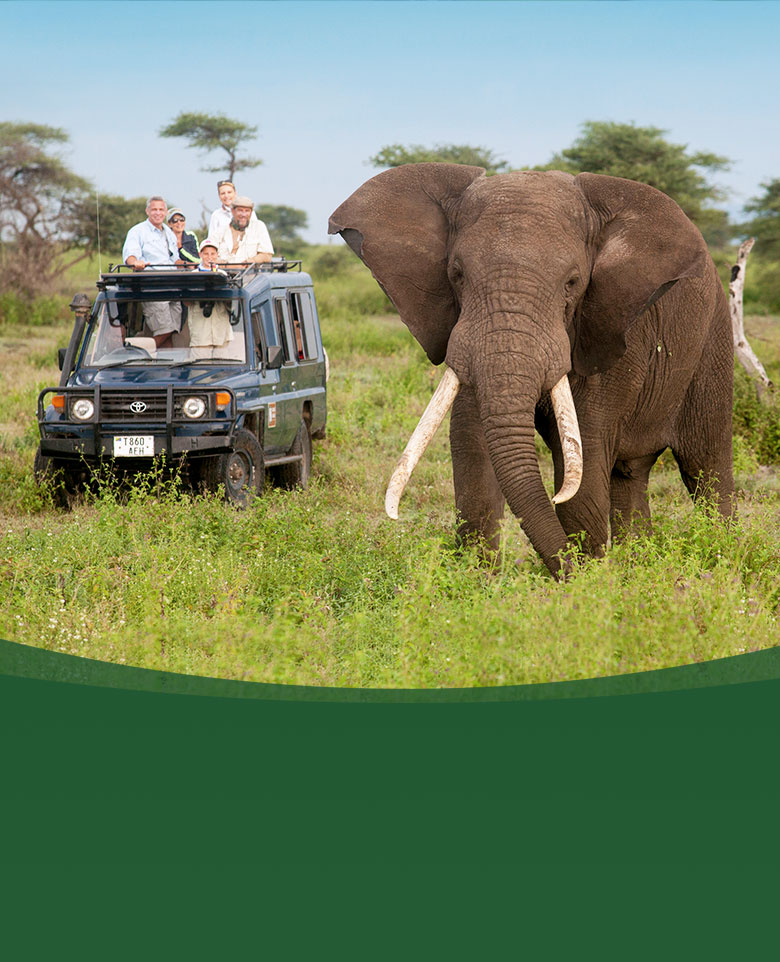

Come Travel with Us!
- San Diego Tourism
- San Diego Hotels
- San Diego Bed and Breakfast
- San Diego Vacation Rentals
- Flights to San Diego
- San Diego Restaurants
- Things to Do in San Diego
- San Diego Travel Forum
- San Diego Photos
- San Diego Map
- All San Diego Hotels
- San Diego Hotel Deals
- Last Minute Hotels in San Diego
- Things to Do
- Restaurants
- Vacation Rentals
- Travel Stories
- Rental Cars
- Add a Place
- Travel Forum
- Travelers' Choice
- Help Center
San Diego Zoo Safari Park; Choosing a Safari - San Diego Forum
- United States
- California (CA)
- San Diego
San Diego Zoo Safari Park; Choosing a Safari
- United States Forums
- Europe Forums
- Canada Forums
- Asia Forums
- Central America Forums
- Africa Forums
- Caribbean Forums
- Mexico Forums
- South Pacific Forums
- South America Forums
- Middle East Forums
- Honeymoons and Romance
- Business Travel
- Train Travel
- Traveling With Disabilities
- Tripadvisor Support
- Solo Travel
- Bargain Travel
- Timeshares / Vacation Rentals
- California forums
- San Diego forum

My husband and I want to book on of the Safari tours; hoping to get close up to th animals and also get on and off the cart. I have narrowed it down to these tours but can't quite decide which is the best option. Wildlife SafariDeluxe, Behind the scenes safari deluxe, or Cart Safari Deluxe.
Any insight into the differences would be helpful! Thank you!
2 replies to this topic

There are two main enclosures at the Safari Park, one represents Africa and the other Asia. The Wildlife Safari takes you into these enclosures on a truck, so you get very close to the animals, but you cannot get off.
The Cart Safari goes around the outside of the enclosures and they stop the cart so you can get off and stand near the fence to take photos of the animals on the other side. You may not be that close to the animals unless they choose to approach the fence.
The Behind the Scenes safari goes into the animal care areas and shows you the kitchens and indoor areas for whichever species. How close you get to which animals depends on which tour you choose. We once got to feed an okapi, and we have been in the lions' den area (while the lions were outside) and to the old tiger exhibit (tigers were about 5 feet away on the other side of a fence).
My preference would either be the Wildlife Safari or one of the Behind the Scenes safaris that takes you into one of the main enclosures in addition to the animal care areas. I would not do the Cart Safari because it's so similar to the tram tour that's included in your ticket.

As Cathy indicates, the best safari for the you is going to be the one that takes you to the animals you want to see.
We did the Saving the Giants safari and we got to see the rhinos and elephants up close. However, if what you really want to see is tigers (for example), that's not the safari for you.
- Family trip, 3 days, where to stay? 10:11 pm
- Pronto card 6:50 pm
- Which beach near Chula Vista? 11:56 am
- San Diego Zoo Safari Park; Choosing a Safari 10:42 am
- Planning a month in the San Diego area - Jan/Feb 2025 yesterday
- Ocean beach or Coronado Apr 28, 2024
- June Gloom Apr 28, 2024
- Lunch spot between airport and La Jolla Apr 28, 2024
- Nearest Walmart Apr 27, 2024
- SIM Card San Diego Airport Apr 27, 2024
- Breeders cup tickets Apr 25, 2024
- Breeders Cup 2024 Apr 24, 2024
- SD to SF road trip Apr 23, 2024
- San Diego to Grand Canyon - good stop suggestion needed Apr 22, 2024
- How far to San Diego from Anaheim? 4 replies
- Discount Seaworld / Legoland / Disney at Costco 11 replies
- Best Area to Stay in San Diego 78 replies
- discount coupons for sea world/zoo 5 replies
- Any nice hotels with Water Slides? or water parks 8 replies
- Celebrating anniversary in San Diego - where should we go? 6 replies
- Best time of year 10 replies
- San Diego in November 5 replies
- San Diego 3-for-1 Pass? (Zoo, SeaWorld & Wild Animal Park) 12 replies
- Scenic drive from San Diego to Los Angeles? Help! 8 replies
San Diego Hotels and Places to Stay
- FAQ: How is public transportation in San Diego?
- FAQ: Tell me about the Trolley Tour
- FAQ: Should I take a day trip to Tijuana?
- FAQ: Where can I find craft beer & breweries in San Diego?
- FAQ: Where to find villa/condo and house rentals in San Diego?
- FAQ: Where can I get the best fish tacos in San Diego?
- FAQ: Where is the best pizza in San Diego?
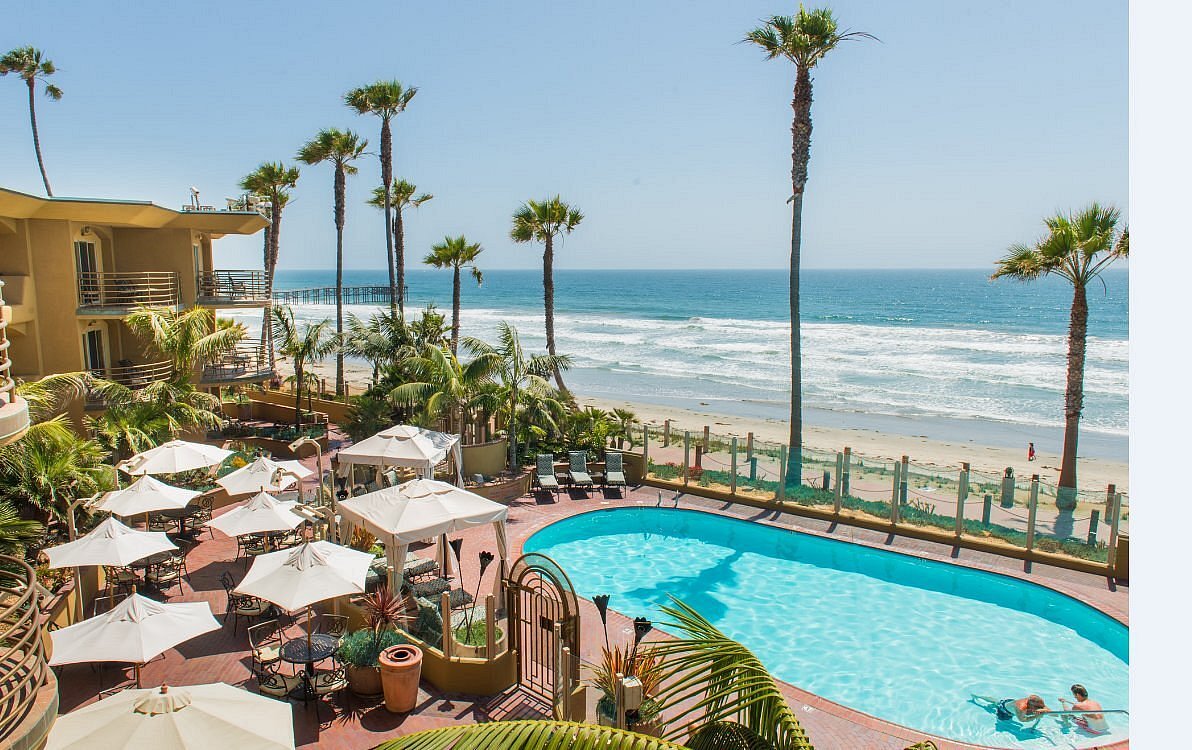
Caravan Safari Adventure
- 1 About Caravan Safari Adventure at the Safari Park
- 3 Admission
- 4 Age Restrictions
- 6 Change / Cancel Policy
- 8 Frequency
- 9 Miscellaneous
- 11 Program Advisements (Mandatory)
About Caravan Safari Adventure at the Safari Park
In a safari vehicle, this tour will visit three (3) of our field enclosures representing mammals and birds from Africa and Asia. Learn animal facts, success stories and be entertained as well as educated about nature and our connection to it, while enjoying up-close photo opportunities.
- Feeding opportunity with rhino and giraffe
- Basic natural history of plants and animals
- Environmental interpretation
- To book, please call Reservation Sales at 619-718-3000
- No service animals permitted on tour
- Admission is NOT included in the price of the Caravan Safari Adventure and is required. Please ensure each guest has a valid Admission ticket or Membership.
Age Restrictions
- Minimum age 8 years (no exceptions)
- 16 & 17 year olds – no accompanying adult required; cannot chaperone 8 – 15 year olds.
- 1 - 15 guests per tour time.
Change / Cancel Policy
- Changes or cancellations are not permitted.
- 10 minutes before tour departure time
- Location: Safari Park Caravan Outpost
- NOTE: Please allow suffient time for travel to the Safari Park, parking, and to find Check In location inside park. Allow additional time for busy holiday periods.
- Daily; 2 Hours; times vary.
Miscellaneous
- Late guests will be admitted only up to 5 minutes past advertised tour time.
- A nominal parking fee is paid upon arrival.
Program Advisements (Mandatory)
- NO Selfie sticks
- Sunscreen, sun glasses, and a hat are recommended
- No food or beverages allowed (bottled water ok; iced water provided)
- No large or bulky camera equipment such as tripods or large camera bags.
- Safari Park reserves the right to re-route or cancel any tour due to inclement weather, animal health, or safety concerns.
- Proof of children's ages may be required.
- Adult to Child (ages 8 through 15): 1 Adult for every 3 Children (no exceptions).
- Ages 16 and 17: no accompanying adult required; cannot be chaperone for riders ages 8 - 15 years.
Navigation menu
Personal tools.
- View source
- View history
- Recent changes
- Random page
- Help about MediaWiki
- What links here
- Related changes
- Special pages
- Printable version
- Permanent link
- Page information
- This page was last edited on 24 December 2018, at 13:12.
- Privacy policy
- Disclaimers
- Blog Archives
- Copyright | Cookie policy
- Literature
- (V)IPs Zoos
- Rest of the World
- Endangered Species
- Species Classification
- (V)IPs Evolution
- Latest Newsletter
- Newsletter Archive
- Subscription
- Video Gallery
Select a Zoo
Reviews — zoos in europe, history description, history documentary.
During the second half of the nineteenth century the first menageries in Moscow were established as entertainment facilities. The first was founded in 1855 by two Frenchmen (names unknown), while the Kreuzberg family owned a private menagerie that opened its door to the public in 1862 . Together these animal collections formed the heart of the Moscow Zoological Garden founded by the Society for Acclimatization of Plants and Animals, which was established by professors of the Moscow State University. The initial idea for such a zoological garden came in 1857 , but it took the Society, including one of its founding fathers professor Anatoly P. Bogdanov, until 1863 to be able to buy property for the future zoo. The Zoo was opened to visitors on 13 February 1864 at the location where it still exists until this very day. On opening day 287 animals were on display, of which 134 were domestic animals, while the others were exotic specimens such as tigers, lions, jaguar, leopard and rhino.
In those days it was an unique experiment to create “a living museum outdoors,” as professor Bogdanov said, in such severe climatic conditions of central Russia. The primary purpose of the Zoological Garden according to the members of the Society was:
to collect alive specimens of higher vertebrates ( firstly — the animals of Russian fauna) for scientific observations;
to establish a collection of typical animals that could serve educational purposes, i.e. distribution of zoological knowledge among the wide public communities;
to carry out scientific experiments and observations of important animals, especially domestic animals of Russian breeds.
The Zoo was financed by the entrance fees and private donations, including contributions by members of the imperial family. In the first years the annual number of visitors grew up to ten thousands. Nevertheless, the incomes did not cover the expenses and the Moscow City Council refused to give financial support. So, the Zoo went into private hands of the Ryabinins’ family in 1874 . They transformed the Zoo into an amusement park and in three years time ruined the place. In 1878 the Zoo was run by the Society for Acclimatization of Plants and Animals again, including fund raising activities. This time the Society was able to manage the Zoo successfully, and even to buy a number of animals. But in the turmoil of the Revolution of 1905 the Zoo was severely damaged: the buildings were ruined, the library was set on fire, many animals perished. So, for the second time the Society was forced to turn over the Zoo to private owners.
Then in 1914 World War I broke out. For the Zoo this meant that in the autumn of 1914 the only building that remain to this day was transformed from the director’s premises to a hospital for wounded WWI soldiers. The WWI impact compounded Russia’s suffering from a number of economic and social problems, which resulted first in the 1917 February revolution followed by the October revolution. In the aftermath of the Great October Socialist Revolution of 1917 and the fall of the Russian Empire, the Society ceased to exist, and in 1919 the Zoological Garden was declared national property and transferred under the responsibility of the ministry of Culture of the communist Moscow parliament, the Mossovet. In 1922 it was transferred to the authority of Moscow City Council and since then it has been supported by the City Authorities. Construction work began on the Zoo grounds. The Zoological Garden premises almost doubled in size with the establishment of the ‘New’ territory on the opposite side of Bolshaya Gruzinskaya street. New exhibits, which followed the principle of Carl Hagenbeck’s bar-less enclosure design were established. One of the most interesting exhibits of the Zoo called ‘Animal Island’ still exists. It was a high stony rock surrounded by a deep water ditch that separated the visitors from bears, tigers, lions and other large predators on the ‘Island’. The total size at the time was nearly 18 hectares.
In 1926 the Zoological Garden was renamed ‘Zoological Park’. At that time the range of activities extended, the animal collection increased considerably with expeditions collecting wildlife in Central Asia, the Far East and the Caucasus. New departments were established, focussed on for instance scientific research, education, veterinary science and nutrition. In those same years Moscow Zoo was the first zoo in the world where educational activities were the main priority.
In 1924 the Zoo had established the Young Biologists Club that gathered like-minded young people that joined in real scientific research. Many of them became a Zoo employee. The Club was founded by Petr Manteifel, who also was the pioneer father of the science called ‘zoo biology’. Manteifel and his young biologists discovered a way of artificial breeding sables (Martes zibellina), which were on the verge of extinction due to man’s insatiable pursuit for its expensive fur. In the 1930 s during Stalin’s great purge many members of the Young Biologists Club were arrested accused of spreading anti-soviet propaganda and liberal-minded ideas and having contact with German colleagues at Berlin zoo, some were even executed as foreign spies. The Club was considered a non-governmental organisation beyond the direct control of the authorities, which in fact was partly true because the Club was a real democracy, with membership available to all.
Although many animals were evacuated and many of the zoo staff were called to arms at the beginning of World War II the Zoo was kept open. Of the 750 employees at autumn 1941 only 220 remained on the staff, most of them women. Getting enough food for the animals was a constant challenge, for instance carcasses of killed horse at the battlefield around Moscow were brought to the zoo. More than six million people visited the Zoo from 1941 to 1945 to enjoy the sights of animals that had remained.
At wartime the scientific work proceeded, perhaps even more intense than before or after the war. The scientific staff worked especially on development of antibiotics. But the most important mission of the Zoo during the war was to give people hope. It produced the illusion of a peaceful life until people survived through the desperation of the war with the Red Army soldiers as the most frequent visitors of the Zoo. Which were given the pleasure of watching newborn offspring even during the war.
During the soviet union period ( 1922 − 1991 ) not many highly ranked people cared about the zoo — no soviet leader had any interest in it. The city encroached on the zoo premises, while the zoo needed additional space for the ever expanding zoo population of animals. Because the breeding results were still excellent.
The Zoo lived up to the goal it had set for itself and made educational activities the main priority. Zoo staff distributed knowledge in the field of natural history and tried to raise the public awareness and concern about the necessity for wildlife conservation. The zoo assisted schoolchildren and students with studying biology, actively participated in scientific research, and actively contributed to scientific publications. So, the Zoo became one of the larger scientific institutions in Moscow. And of course it still was the favourite recreational place for Moscow citizens and those who visited the city.
As off 1974 when Igos Sosnovsky retired as director and his successor Vladimir Spitsyn took over Moscow Zoo became part of the international zoo community again. Sosnovsky as a WWII veteran hadn’t been able to brush aside the fear of repression and avoided all international contacts for some reason. Spitsyn restored all international activities from before the war and the Zoo became member of many European and International Breeding Programmes in which it exchanged its rare and endangered animals, shared experience and information.
Although already in the 1970 s improvement of all zoo facilities was needed and ideas of a new zoo in another region of Moscow were launched, nothing happened due to local economical and social problems. By the end of the 1980 s the Zoo’s condition became alarming. Facilities were deteriorating, enclosures were dilapidated and technical equipment needed to be replaced as well. And while a few improvements had been achieved — such as a partial renovation of the main entrance, the monkey house and lion house — urgent measures were still needed.
Then, in 1992 the new Moscow government made a decision to start the most ambitious reconstruction project in Moscow Zoo’s history with the first stage of the project to be completed by 1997 , when the 850 th anniversary of the City would be celebrated. Anatoly A. Andreev who had been involved in the Zoo’s design and architecture since the 1970 s headed the team of architects. The project’s renovation objectives were focussed at (a) preservation or partial renovation of the historically valuable buildings and existing pools, (b) reduction of the noise from the surrounding streets, © connection of the Old and the New territory via a footbridge, and (d) expansion of the Old territory by incorporating adjacent areas and buildings.
Besides the preservation and renovation of almost all important zoo constructions, including the ones that actually were dilapidated, many new enclosures and facilities were built. Already in 1993 the footbridge that connected the Old and New territory was completed. It allowed visitors to avoid crossing the busy B. Gruzinskaya street with its heavy traffic. In 1993 other constructions were completed as well, such as an enclosure for large birds of prey and a complex of enclosures for feline species, including leopards, Pallas’ cats and lynx. Next, the Hagenbeck-style ‘Animal Island’, one of the most remarkable exhibits in the New territory, was renovated. The historic appearance with enclosures that resembled the natural habitats of Amur tiger, striped hyena, African wild dog and Asian black bear was preserved. Later they introduced Asian lions in one of the enclosures around the large rock in the centre of the ‘island’. During the renovation they created the Exotarium, which held several aquariums, inside the rock on the second floor.
The following years many more enclosures were renovated, besides the new research and veterinarian facilities that were put into operation in 1994 . In 1996 , the main entrance itself (featuring a small artificial waterfall) was reconstructed. The same year the old, dilapidated elephant complex was demolished and a new elephant house was erected at the same spot, while the inhabitants (four African elephants and four Asian elephants) were temporarily moved to a a former tram depot that was completely renovated and specially equipped. A new children’s zoo was opened in the New territory, including a children’s theatre that organises shows with educational elements. And besides several aviaries, a pavilion for water birds was built on the shore of the large pond in the New territory.
Although in those days 4 additional hectares of space was added to the former existing 18 hectares, the Zoo still lacked space to create favourable conditions for their species to breed. And its location in the centre of Moscow didn’t contribute to the favourable breeding conditions they wanted of course. Therefore, the 200 hectares area near the city of Volokolamsk (about 100 km from Moscow) that was given to the Zoo in 1996 for the establishment of a breeding station was very much welcomed (see also Breeding Centre ).
The first major stage of the general reconstruction of the Moscow zoo represents a unique event. Not only over 50 facilities have been renovated ( 90 % of all existing facilities) and newly built, but it was achieved in such a short period of time. But maintenance and small and larger refurbishment is ongoing business in a zoo. So, i n 2002 , the Moscow City Government and the City Council allocated the necessary funds to start construction of a new pavilion for the Asian elephants. In 2003 the three elephants could move house already, and in spring 2009 , the first newborn elephant calf was welcomed.
The Moscow Zoological Park has come a long way from the small zoological garden it was to the large institution of scientific research, education, conservation and recreation it is today. And due to the dynamics of the standards used in the zoo community regarding animal health and welfare, Moscow Zoo is constantly improving its facilities, also during 2014 celebrating its 150 th anniversary.
(Source: Moscow Zoo website; Zoo with a Human Face, to the 150 th anniversary of the Moscow Zoo — a documentary by Darya Violina and Sergei Pavlovsky, 2014 ; Zoo and Aquarium History by Vernon N. Kisling, Jr., 2001 ; Wikipedia)
An account of 150 years of history of the Moscow Zoo
(A documentary by Darya Violina and Sergei Pavlovsky)
The history of Moscow Zoo shown through the perspective of the lives of the people who have been important to the Zoo’s development and continuous progress over those many years since 1864 . Thousands of photographs, hundreds of chronicles, accounts and recollections that have preserved the story that began so long ago, against all odds, and lasts uninterrupted to this day. A documentary about those who have devoted their lives to serving a noble and rewarding cause, those who have started from scratch, those who maintained that work and about those who revive the Zoo as off today.
(Source: sdpavlovskiy YouTube channel)
20 . 06 . 2014
Finally, Moscow Zoo is paid a visit. I have been looking forward to this for quite some time. It has been on my to-do list since I learnt about the large collection of feline species on display at the Zoo. So, I am here on this sunny day in June to satisfy my curiosity, in the year they celebrate the Zoo’s 150 th anniversary.
I am entering as one of the 1 , 5 million paying attendance yearly. Which is not even half of the total number of visitors a year. This is about 4 million, because there are specific categories (e.g. disabled, pensioners, children, students, etc.) for whom the admission is free.
OLD TERRITORY
I turn left after the main entrance to visit the large predator section of the Old territory. Not that only here you will find predators, but the greatest part of their predator collection is grouped in this section. I will come back to the grouping of Moscow Zoo’s animal collection later. After having walked along a fence that blocks most of the views on the work in progress at the lake I arrive at what they call here the ‘tropical cats’ section: Bengal tiger (unfortunately the genetically aberrant version — a white tiger), jaguar and cheetah. Both the tiger and the jaguar have their indoor enclosures in the same house built at the perimeter of the premises. The cheetahs have their shelter for the night and bad weather in their outdoor paddock, so that cannot be visited. The tiger and the jaguar however have interesting housing that serves the needs for both the cats and the visitors. The latter are pleased with Asian and South American (Inca) ornaments to make sure they understand the geographical origin of the species. While the walls have murals representing the species’ original habitat … Machu Pichu for the jaguar. The animals themselves have various enrichment features at their disposal, including high level observation posts, in rather small exhibits. The outdoor facilities for these two species are accessible from the indoors. It has natural vegetation, but not a lot. Likewise there are not a lot of options to shelter from extreme weather or loud crowds. Although the cats have access to several resting posts at different levels, these enclosures can do with some improvements — at least more vegetation — to make them better fit for purpose, in my opinion. The enormous exposure of the cats is also due to the fact that they use windows to separate animal from man along almost the total length of the enclosures.
When I walk the few steps to the entrance of the Bear House, which is like the jaguar and tiger indoor enclosure built at the edge of the Zoo grounds, I pass in between the Pallas’ cat exhibit and a second jaguar exhibit. The Pallas’ cat has a flat grassy area with three large trees, some shrubs and a potential pond (when filled with water) available in its outdoor enclosure. Windows all around and a wire mesh roof prevent the cat from fleeing this scenery that doesn’t resemble the cat’s original Himalyan habitat. Across the footpath there’s a jaguar enclosure that’s more interesting than the one directly neighbouring the tiger. This one has a small stream and loads of vegetation and a multilevel resting platform. Still the animal is quite exposed.
The Bear House provides a nice and secluded area where three adjacent bear enclosures houses sloth bear and spectacled bear. As a visitor you walk via a roofed corridor more or less in the dark along the enclosures having good views on the exhibit via man-sized windows. The enclosures have a dry shallow moat at the visitor’s side, but I don’t think this withhold the bears from coming close to the windows. The enclosures are small but almost completely filled with enrichment features including various platforms, a tree trunk structure, rubber hammocks and natural vegetation. Considering the design I think these enclosures offer peace and quiet for the bears, unless people start banging the windows of course.
In slightly larger enclosures they keep Amur leopard, snow leopard and cougar ( Puma concolor ). At all of these felid species enclosures the distance between the public barrier and the fence does allow contact when people lean far forward.
Further along the footpath around the corner the arctic fox and the dhole are housed in enclosures that have a similar interior design as those for the felids. Despite the fact that these species live under different natural circumstances in the wild (forest and tundra habitat respectively).
When I walk back to have a look at the large birds of prey aviary I cannot prevent myself to have a brief look at the giraffe enclosure as well. It’s obviously a relic of the past that is not fit for purpose anymore. Still they have one reticulated giraffe on display at a saddening small area. It loves to be fed by the public that doesn’t care about the warning not to feed the animals. On the other side of the building a similar pitiful situation for the single white-tailed gnu can be seen.
One of the most extraordinary group of species brought together on display can be found right after the row of predator enclosures. The maned wolf from South America has the red-necked wallaby and emu from Australia as neighbour. But also in the same area the African wild dog is on display as well as white-tailed gnu (Africa) and kiang (Asia) in the row of stables along the rim of the premises.
The raccoon exhibit is worth mentioning considering the aforementioned accident risks. It has a very typical enclosure design with electrical wire on top of windows surrounding the entire exhibit. The electrical wire is within reach of the public. So, there are numerous warning signs! But why they installed electrical wire on top of windows that are unclimbable for raccoons? To keep out the public perhaps?
In the bird house, in the far end corner from the main entrance, birds from all geographical regions are grouped together, including Humboldt penguin and African penguin. The house consists of two part with one part half empty, and has also very common species on display, such as wild turkey, common pheasant and European hedgehog. Outside this building several aviaries comprise a large array of parrot species (South America and Australia).
Proceeding with my tour around the Old territory I have a look at the Asian elephant house and its surrounding grounds. The fancy steel with blue details of the elephant house doesn’t appeal to me, but that is just a matter of taste. It is definitely the most modern exhibit in the Zoo I’ve seen yet, in style and in size, with a nice pool at the visitor’s side.
I skip the reptile house to save some time, and money too, because an additional fee complies. So I walk straight to another modern enclosure — the bar-less and moated wolf exhibit. Although it has a Hagenbeck-style design, the space available for the wolves is ridiculously small. The wolves will never be able to cross the water-filled moat and climb the wall and thus break out, still there is impressive electrical wiring in place on top of the wall. Again, probably to keep out the public.
Making my way to the footbridge that connects the Old and New territory I pass along a very old-fashioned row of enclosures built in a semicircle in front of the 16 metres high sculpture by Zurab Tsereteli called ‘Tree of Fairy Tales’, 1996 . The enclosures house several species of mustelidae (sable, European polecat, stone marten), as well as African wild cats. Then followed by several aviaries again. At this point I am really lost regarding the way they group the Zoo’s animal collection.
NEW TERRITORY
Proceeding clockwise I find the doors of the Tropical House closed for renovation. So, no butterflies for me this time. But in one of the two spacious aviaries around this house I discover several ducks, such as the mandarin duck and the black-bellied whistling duck, together with the common kestrel ( Falco tinnunculus ), though neither rare nor endangered.
Then a rather special exhibit appears, the Animal Island, which was developed in the 1920 s as one of the first Hagenbeck-style enclosures in the New territory. Although it took some renovation activities it still exists to this very day. In the centre of this moated area they have erected a fake ruined fortress, which serves as the background for the species in the surrounding exhibits. These bar-less exhibits have a more modern appearance but it isn’t necessarily an improvement for the animals. For instance the Asian black bear has a bare environment with minor enrichment available and no vegetation, but the brown bear is even worse off in a similar enclosure but next to nothing of enrichment features. The tundra wolf ( Canis lupus alba ) and the striped hyena have a little better place at their disposal, but the Asian lions have by far the best enclosure. They have several resting platforms, trees and a stream that ends in the moat. Again to save time I skip an exhibit. This time the Exotarium with its aquariums that has been created inside the ruined fortress and by the way requires an additional fee to get in.
One of the rare areas in Moscow Zoo where you find mixed-species exhibits is called ‘Fauna of the Savannah’. It has a South American section with capybara vicuna and guanaco, and — very importantly — a large pool at the disposal of the largest rodent on earth. Though absolutely not endangered, these water-loving capybaras should have access to water at all times, in my opinion. The real savannah area with African species has several enclosures. A mixed species exhibit with sable antelope and dikdik. And Grevy’s zebra together with ostrich and giraffe. Also this time there’s only one giraffe in the paddock. The location of the meerkat enclosure is well chosen, because when they sit on top of one of their hills they can watch the other animals. Although it is the largest and probably the most modern facility at the Moscow Zoo I still think it is disappointingly mediocre compared to other zoos I have seen in Europe and North America.
Before I go to the primate section I buy myself an ice cream and walk along the horse stables on the eastern edge of the New territory premises. Looking for an answer to the question “why are there horse stables at this place?” The question still waits for an answer.
At Moscow Zoo they keep both Sumatran as Bornean orangutans, which is quite unusual. The outdoors for the five individuals, including 2 young, of the Sumatran species looks impressive due to the enormously high rock face at the rear. The wall looks extra impressive because it is rather close to the viewing windows. Unfortunately, the exhibit lacks trees and vegetation other than grass while the enrichment is scant and I don’t see puzzle feeders. The Bornean orangutans have a similar outdoor enclosure, but it is suggested that olive baboons ( Papio anubis ) are on display here as well. It could be that they alternate in the same outdoor enclosure, but this is not very clear.
The western lowland gorillas also have a similar outdoor enclosure design due to which the animals are enormously exposed to the inquisitive public. Considering the number of youngsters Moscow Zoo appears to be having good results breeding orangutans and gorillas.
Indoors, all the great ape exhibits have much enrichment and jungle-like murals, but the agile gibbon has even more enrichment inside. I haven’t seen a specific outdoor enclosure for the agile gibbon but it could be possible that it alternates with the Sumatran orangutans. Only this enclosure lacks high trees or other options for the gibbon to brachiate, which is its natural behaviour in the canopy of the gibbon’s native habitat, the rainforests of southeast Asia.
The terrarium building, located behind the Primate House, is beautifully decorated with little mosaic tiles. They have the usual row of exhibits, but in this case especially the larger reptiles and tortoises (python, crocodiles, alligator, tortoise) are kept. And outside they have two giant tortoise species, the Aldabra and the Galapagos tortoise.
On my return to the exit I pass the exhibits of a few of the many predator species they have on display at Moscow Zoo. The polar bear is provided with a big heap of artificial ice, but that’s about it when it comes to enrichment, though there are some plastic drums to play with. The enclosure as such is the prototype of polar bear enclosures worldwide, rear wall of cement and large bricks, concrete floor, large and deep water-filled moat. Unfortunately, again here the annoying reflecting windows. The yellow-throated marten I do not see, and the same counts for the Eurasian otter in its large elongated outdoor exhibit with a shallow pool along the whole length. It must be great to see the submerged otters swim in this pool.
Conclusion There are several ways to group a collection of animals which can support a zoo’s educational efforts. Of course, some people just come to the zoo to be entertained, but when an individual is ready to learn some things the worst thing you can do is confuse him or her. And to be fairly honest, confusing it is. Sometimes they group the collection according their taxonomic tree, which is the case with the felids, the bird species and the primates. Then again they have decided to present the collection by geographical origin, like in the ‘Fauna of the Savannah’, or according original habitat like the mountain-dwelling tur and markhor. And at some point they just make a mess of the grouping, for instance in the area with the maned wolf, the red-necked wallaby and others. In the end it seems the Zoo just want to have on display as many species as possible, because all species that live in herds they keep them in small numbers. I do understand that it is not easy, requires tough decisions and certainly is not cheap to rearrange your entire collection, especially when it is that huge as it is here at Moscow Zoo. Anyway, further renovation is foreseen and probably some rethinking as well.
I hope that they get rid of all these windows they have at so many exhibits. For some situations it is inevitable I understand, but I sincerely hope they will return to the original Hagenbeck idea of bar-less enclosures, taking into account modern husbandry standards of course. As the position of the sun makes it sometimes hard to get even the slightest glimpse of the animals due to the reflections in the windows. And last but not least they have the tendency to have windows all around or at more than 50 percent of the perimeter of an enclosure. Most of the time leading to more exposure of the animals to the public and possible unrest.
Sumatran orangutan youngsters at Moscow Zoo
Just another day at the zoo for these orangutans ( Pongo abelii ) — nothing much exciting going on in this safe and secure environment. But wouldn’t it be nice to see them swinging and romping in the forests of Sumatra.….
Raccoons at Moscow Zoo
Raccoons are known for their habit to clean their food in the water before eating it. It seems they also want to have a clean ball before playing with it.
Breeding Centre
Information and education, zoo details, breeding farm.
The Moscow Zoo has always been trying to create the most favourable conditions for their animals to fulfil their basic needs. Not only for animal health and welfare purposes but also to breed the animals successfully. These specific breeding conditions could not be achieved due to its location in the City centre and the lack of space. In 1996 the Zoo came into possession of an area of 200 hectares near the city of Volokolamsk (about 100 km from Moscow). In this picturesque hilly area of the former quarries of the Sychovo mining factory, with streams, springs and artificial ponds better opportunities were available for breeding various — predominantly rare — species of animals.
The main goals of the Breeding Centre, besides maintaining rare and endangered species of animals, are establishing breeding pairs and groups and developing new husbandry methods. Since excessive disturbance is likely to have adverse effect on the breeding efforts, the actual Breeding Centre is not open to the public.
The construction of the Breeding Centre started in March 1996 . The first inhabitants of the Centre were birds of prey and waterfowl and they have been successfully breeding birds ever since. The collection of waterfowl has grown notably since the beginning. Apart from the numerous mallards and ruddy shelducks, the inhabitants of the ponds include pintails, pochards, tufted ducks and black geese of the genus Branta. Bewick’s swans are thriving, raising their chicks every year. Japanese, white-naped and Siberian cranes are also breeding successfully and many other species, including parrots. The breeding centre for birds of prey is continuously expanding, with Himalayan griffon vultures, golden eagles, imperial eagles, Steller’s sea eagles, and black vultures among its most prominent inhabitants. Regular breeding has also been achieved in saker falcons ( Falco cherrug ).
They keep carnivorous mammals as well at the Breeding Centre. These include endangered species such as Amur leopard, Pallas’ cat, cheetah, Amur tiger, dhole, wolverine, and yellow-throated marten. Of these species the Amur leopard is listed Critically Endangered according the IUCN Red List of Threatened Species™ , with about 45 individuals left in the wild. The Zoo’s track record says they have produced offspring from Pallas’ cat, dhole, yellow-throated marten, and Amur tiger.
For the ungulates that are kept at the Centre the environment is almost ideal. There are bactrian camels as well as kiangs, Saiga antelopes, blue sheep and vicunas. Hoofed animals originating from mountainous areas have large paddocks at their disposal that are situated on the slopes of the surrounding hills, more or less similar to their natural habitat.
Besides the more rare and endangered species the Centre also has an interesting collection of domestic hens, a horse stable and a dog-breeding centre, mainly for the breeding of Central Asian sheep dogs. Furthermore, there is a small quail farm and a poultry farm with layer hens.
Moreover a subsidiary farm in Lotoshino houses some cattle, smaller livestock, and the main herd of bactrian camels and yaks. The area of the subsidiary farm is about 51 hectares and it comprises hayfields, pastures, a sheepfold and an apiary. Most importantly it provides the Moscow Zoo with ecological feed for its animals.
The Breeding Centre’s collection comprises 10 species of carnivores, 6 species of ungulates, 74 species of birds and a great number of domestic animals, but the collection is expanding constantly. Although it is still closed to visitors, the Zoo’s goal is to open part of the farm (as they call the Breeding Centre themselves) to outside visitors soon. They plan to create an additional safari park at the location of the Breeding Centre.
(Source: Moscow Zoo website; Zoo with a Human Face, to the 150 th anniversary of the Moscow Zoo — a documentary by Darya Violina and Sergei Pavlovsky, 2014 )
Information panels and Education at the Zoo
First thing to be noticed of course is that the information on the panels around Moscow Zoo is given in the Russian language. And no other language. This is not unexpected as most of the information provided in Moscow is only in Russian. Fortunately, the name of the species on display is given in English as well, together with its scientific name. As far as I can tell and understand no information is provided on the species conservation status (or IUCN Red List status). On the new revamped website this information is available but only in Russian and no icons or logos are used, so you have to rely on machine translation services. The panels show geographic maps of the species distribution and sometimes the IUCN status and if the species is part of EEP /ESB, as well. But this is not done consistently, and I am not sure how reliable the information is. Nevertheless I have been able to find on the internet a list of species that represent the Moscow Zoo contribution to the European Endangered species Programmes (EEPs).
There is also a zoo school that is primarily focussed on children, and I assume that the Young Biologists Club still exist. Foremost because it has been very successfully delivering a range of important staff members over the years.
- Directions
directions to Moscow Zoo
Address : B. Gruzinskaya 1 123242 Moscow Russia
public transport
The metro system can be quite intimidating for foreigners because of the language issue, but I can assure you it is the best way of navigating the city. The metro stations are the most beautiful I’ve ever seen and buying tickets can be done using sign language (see the tripadvisor website how it is done). When you are not able to decipher the Cyrillic alphabet on the fly it is best to prepare your metro trip beforehand and make sure that you know how many stops you have to travel from the departure station to your destination, including transfer stations. Another way of travel support is the Art-Lebedev metro map , which has the names of the stations both in Russian and English mentioned. The most fancy way however is by using the Russian metro app on your smartphone. The Yandex.Metro app — provides a bilingual metro map which can even build connection routes for you and estimate travel times.
Moscow Zoo’s main entrance is conveniently located right across from the Krasnopresnenskaya metro station on the Brown Circular line (no. 5 ). Also the Barrikadnaya metro station is rather close to the main entrance, Purple line (no. 7 ).
by bicycle
As mentioned already Moscow is a very large city. So, it really depends on how close you already are to the Zoo if cycling could be an option. The obvious challenge is the traffic which has grown dramatically in recent years — the centre of Moscow is a non-stop traffic jam. Furthermore the poor driving habits of Moscow motorists are notorious, from road rage to rear-ending. In addition, knee-deep snow and the grimy slush that inevitably follows during the long and fearsome winters doesn’t make cycling in Moscow a very attractive mode of transport. Nevertheless the City Council tries to make the city more bike-friendly with a bike rental scheme like in many major cities around the world. I decided to use the metro.
There is no dedicated parking available at the Zoo, but if you really want to drive yourself you can get directions below by providing your point of departure.
From : -- Choose source -- Moscow Zoo or
Download the zoo map here .
Goal: 7000 tigers in the wild
“ Tiger map” ( CC BY 2 . 5 ) by Sanderson et al., 2006 .
Latest Additions
Tallinn zoological gardens, tallinna loomaaed, stadt haag zoo, tierpark stadt haag, salzburg zoo, krefeld zoo, cerza zoo, cerza parc zoologique lisieux, bratislava zoo, rheine zoo, naturzoo rheine.
- ALL MOSCOW TOURS
- Getting Russian Visa
- Top 10 Reasons To Go
- Things To Do In Moscow
- Sheremetyevo Airport
- Domodedovo Airport
- Vnukovo Airport
- Airports Transfer
- Layover in Moscow
- Best Moscow Hotels
- Best Moscow Hostels
- Art in Moscow
- Moscow Theatres
- Moscow Parks
- Free Attractions
- Walking Routes
- Sports in Moscow
- Shopping in Moscow
- The Moscow Metro
- Moscow Public Transport
- Taxi in Moscow
- Driving in Moscow
- Moscow Maps & Traffic
- Facts about Moscow – City Factsheet
- Expat Communities
- Groceries in Moscow
- Healthcare in Moscow
- Blogs about Moscow
- Flat Rentals
Moscow parks – leisure, nature and historical
Moscow is the most green megapolis in the world. There are over a hundred parks and green spaces like gardens, squares and boulevards. You will definitely bump into a few of them wherever you go. Whether you are interested in memorial, historic parks, parks of wildlife or you just want to have a calm break from the speedy city life – city parks have something special for everyone.
Moscow leisure parks
The leisure Moscow parks are undoubtedly the most popular and famous with the locals and travelers. Today such parks provide a great number of exciting entertainments for Muscovites and city guests, adults and children.
The Gorky Park

Gorky Park opened in 1928 and was the first holiday park in the Soviet Union with playgrounds, a sports stadium, exhibition halls and attractions for kids. Today it has a fresh, vibrant appearance. The park features bike rental stations, a comfortable business area with Wi-Fi, an outdoor movie theatre and a greenhouse where you can buy fresh greens such as basil and lettuce. To contemplate the sky and the stars, go to the observatory and look through the telescope while listening to fascinating stories from astronomers. Enjoy many sports in the park: volleyball, handball, football or a peaceful jog around the beautiful surroundings.

Zaryadye Park
Opened in September 2017, Zaryadye is the youngest on our list. Located just a few minutes away from Red Square, it includes various activities like the floating bridge with its thin V-form extension, an ice cave, also concert hall and an amphitheater. The entire territory of the park was divided into four zones of Russia: forest, steppe, tundra, and the floodplains.
Neskuchny Sad

By walking along the Moskva River’s bank from the Gorky Park towards Vorobievy Gory (Sparrow Hills) you’ll reach Neskuchny Sad («Not Boring» garden), a wonderful place in the Moscow center, one of Moscow’s oldest parks, charming slice of wildlife. The park mostly consists of pristine forest, dotted with old summer pavilions, ponds and quaint little stone bridges. There are a lot of opportunities for different activities lots of children playground, a ping-pong and chess clubs, football fields and tennis courts, horse riding, tree climbing and having rest in one of the nice cafes.
Museon Park

Hermitage Garden

Hermitage Garden has always been known as an amusement, entertainment center with theatres, shows, cafes, summer pavilions, pergolas since 1830. Shalyapin, Sobinov, Nezhdanova – great Russian opera singers starred on the garden stage. Famous Russian composer Rakhmaninov conducted the orchestra. Sara Bernar, Maria Yermolova, outstanding actresses, played in the open air performances. Tolstoy and Lenin had a stroll in the garden. So lots of celebrities from different epoques liked it a lot and spent their time in Hermitage Garden. You can find here three theatres in the garden: Hermitage, Sphere and New Opera. During winter an ice rink works here and in summer a musical stage is assembled to host jazz and brass band festivals.

In Sokolniki Park visitors can play billiard, chess or draughts, table tennis, as well as go cycling, roller blading and swimming in the summer and ice skating or skiing in winter. Each season is highlighted by special memorable and bright events, for example, Summer Jazz Festival or Baby Fest (for future mums), open air beach disco parties, Ice Cream Day, International Clown Festival and many other shows and exhibitions. The park has an observatory, kids center and a co-working zone with free Wi-Fi which is really nice for spending high quality work time there.

Moscow nature parks
The nature parks are national reserves with the amazing forestry and incredible variety of animals and plants there. The breath of wildlife and the chance to be closer to the virgin nature excites both children and grownups. Hundreds of different species of animals can be found in Moscow nature parks. The richest woodlands with old and even ancient trees, like a 200 years pine-tree in the Elk Island National Nature Park, are the point of passionate interest for visitors.
Aptekarsky Ogorod

Aptekarsky Ogorod (Apothecary Garden)
Aptekarsky Ogorod (Apothecary Garden) is one of the oldest gardens in Moscow. It was founded in the XVIII century by Peter the First (great Russian emperor). A larch that he planted himself still grows in the garden, so it’s more than 250 years old. At the time of its foundation, it was a garden with herbs and medicinal plants and was used as an educational center for doctors. Today there are the orangery with its tropical palms, the carp pond, and the immense trees that dot the landscape and turn wonderful golden shades in the autumn. Several restaurants and cafes work here making it a very nice spot for relaxation no matter what season it is. You can book a special tour or join the guided excursion group.
Losiny Ostrov

Losiny Ostrov (Elk Island Park)
Losiny Ostrov (Elk Island Park) is located at the north of Moscow. It covers 22 km from the west to the east and 10 km from the north to the south and it’s one of the most beautiful national parks in Moscow. Two rivers, Yausa and Pechorka begin here. You can find lots of fields, ponds, meadows, streams in the park as well as elks. Here you can enjoy guided tours, available in English. You can choose a guided tour about flora and fauna of the area, you’ll learn why elks are there, which animals are their neighbors. Or enjoy another excursion, which is totally devoted to historical past of ancient tribes once lived there, you’ll know about old Russian mythology, rituals and traditions.
Serebyany Bor

Serebyany Bor (Silver Forest)
Serebyany Bor (Silver Forest) is a famous pine forest in the west of Moscow. The park has 230 forms of plant life, and is also home to watersports complex, providing a lot of activities for visitors. The layout of Serebryany Bor is unusual, as it is located on an artificial island between a meander in the Moscow River and a channel. There is an artificial lake, the Deep Gulf and picturesque Bezdonnoe (Bottomless) Lake in the depths of the forest. Serebryany Bor’s beaches are the cleanest in the city and very popular among Muscovites. On weekends it is difficult to find a free spot here, especially because a whole range of services are offered to visitors, from simple deckchairs to catamaran and yacht rides. Driving is prohibited on the territory of the island so be ready to use trolleybus to reach the entrance.
Botanichesky Sad

Greenhouse of Botanical Garden
Main Botanical Garden of The Russian Academy of Sciences is the largest and most famous is Moscow. The garden is a real museum of nature with a very rich (more than 18000 types) collection of plants. The park was founded in 1945 at the place of the 17th century Apothecaries’ Gardens. The garden’s collection is turned into botanical expositions, made with use of modern receptions of landscape architecture. Here you can see a tree nursery, a shadow garden, hothouse complex, collection of flowers, a rosary, exposition of coastal plants, garden of continuous blossoming, Japanese garden and expositions of cultural plants and natural flora plants. The biggest part of Garden is the Tree nursery occupying the space of 75 hectares. About 2 thousand wood plants grow here. Another big exposition of the Garden is nature Flora, divided into six botanic-geographical collections: European part of Russia, Caucuses, Central Asia, Siberia and Far East. Pride of the Main Botanical Garden is the collection of tropical, coastal and water plants, which is considered as the best in Europe. The Japanese garden, a great model of Japanese landscape gardening art has a 13-level stone pagoda of the 18th century, stone Japanese lamps, ponds, falls and streams, tea lodges and more than 100 species of the most character Japan plants. It is especially decorative in spring, during Oriental cherry blossoming and in fall, when foliage blazes in crimson colors.
Moscow historic parks
Historic nature parks and estates once were the mansions of the Moscow aristocracy. At that far times the estates were outside the Moscow city limits, but after the city expansion and urbanization, they became easily accessible.
Kolomenskoye

Kolomenskoye Museum and Park
The chief attraction of the park is undoubtedly the stone Church of the Ascension of the Lord. It was constructed in 1532 by order of Tsar Vasily III to commemorate the birth of his son and heir, Ivan the Terrible. But there is a lot more to see in the park: the pretty Church of the Icon of Our Lady of Kazan – with its bright azure domes and plenty of gold. Further into the park there is a charming Church of the Beheading of St John the Baptist, built by Ivan the Terrible to mark his coronation.

Kuskovo Park
Kuskovo Park is one of the oldest country estates in Moscow. It was given to General Sheremetev by Peter the Great in 1715, but was left to fall into neglect before being plundered by Napoleon’s troops in 1812. Nowadays the estate has been restored to its former glory and is a good example of Russian 18th Century imperial architecture. The palace is a fine and rare example of wooden neoclassicism. It was completed in 1775, and the rich interiors remain unchanged since 1779. It includes a room hung with exclusive exquisite Flemish tapestries, an abundance of silk wallpaper and an impressive collection of 18th century European and Russian paintings. The palace looks onto the lake, which is surrounded by smaller pavilions: pretty Italian, Dutch and Swiss Cottages, Blank’s Hermitage and the old Orangery, where the State Ceramics Museum is located now, an extensive and absorbing collection of porcelain from the 18th century to the present day. On the other side of the lake is a large wood popular with local cyclists and joggers.
Our Private Tours in Moscow
Moscow metro & stalin skyscrapers private tour, moscow art & design private tour, soviet moscow historical & heritage private tour, gastronomic moscow private tour, «day two» moscow private tour, layover in moscow tailor-made private tour, whole day in moscow private tour, all-in-one moscow essential private tour, tour guide jobs →.
Every year we host more and more private tours in English, Russian and other languages for travelers from all over the world. They need best service, amazing stories and deep history knowledge. If you want to become our guide, please write us.
Contact Info
+7 495 166-72-69
119019 Moscow, Russia, Filippovskiy per. 7, 1
Mon - Sun 10.00 - 18.00

IMAGES
COMMENTS
The Zoo is located in Balboa Park, just north of downtown San Diego, at 2920 Zoo Drive, San Diego, CA 92108. The Safari Park is located at 15500 San Pasqual Valley Road, Escondido, California 92027. Since there is so much to see and experience at our parks, and to get the most from an unhurried visit, we recommend planning a multi-day visit.
2920 Zoo Drive, San Diego, CA 92101. The San Diego Zoo is the Safari Park's sister park to the southwest in San Diego. Distance between the San Diego Zoo and the San Diego Zoo Safari Park is 35 miles. Please allow 45 minutes to 1 hour travel time. Purchase a two-park pass here.
The San Diego Zoo Safari Park is a smoke-free facility. Stroller Rentals: Strollers are available for rent on a first-come, first-served basis near the entrance. Availability and price subject to change without notice. You are welcome to bring your own stroller. Rental Prices: Stroller single: $16. Stroller double: $20.
Backpacks Are Allowed Inside San Diego Zoo. You can bring almost any standard-sized backpack into the zoo, from your little tyke's rucksack to models with child seats in them. Call 619-231-1515 if you are concerned that your backpack may be too large. You can always store it in the Zoo's Luggage storage.
Purses, handbags and satchels can generally be brought into the San Diego Zoo without any issues. Lunchboxes and coolers are allowed into San Diego Zoo with some restrictions to keep in mind that we detailed in the previous section. Backpacks and duffle bags may be brought into the zoo as well! Like many zoos, theme parks and attractions across ...
San Diego Zoo Bag Policy. The San Diego Zoo allows you to bring in small backpacks and bags. However, you are not allowed to bring coolers or glass containers. ... You can find more information on visiting the Safari Park here. San Diego Zoo Visitor Tips. Last but not least, here are 3 tips when visiting the zoo to help your experience be a ...
Less than 5 days, payment is non-refundable. Wildlife Safaris are an all-weather event, however during periods of inclement weather please call 619-718-3000 to check the status of your tour. The San Diego Zoo Safari Park reserves the right to cancel or reroute a tour due to inclement weather, animal health, and/or safety concerns.
15500 San Pasqual Valley Road, Escondido, California 92027-7017. The Safari Park is the San Diego Zoo's sister park to the northeast in Escondido. Distance between the San Diego Zoo and the San Diego Zoo Safari Park is 35 miles. Please allow 45 minutes to 1 hour travel time. Get Directions .
And a moment can change a lifetime. Buy Tickets. Visit Website. Neighborhood: North Inland. 15500 San Pasqual Valley Rd. Escondido, CA 92027-9614. Get Directions. Contact Info. (619) 718-3000.
Deluxe Flightline Safari. BUY. $106 & up per person. Offered daily. 1.5 hours. Safety/Age Restrictions. Age Range: Adults and children ages 8 and older only. Children ages 8 to 15 must be accompanied by a paid parent or guardian 18 years or older during the entire Flightline experience. Guests ages 16 to 17 may participate alone, but must have ...
Ages 8 & up. $81 & up per person. Soar as high as 130 feet above the ground, with a spectacular bird's-eye view of rhinos, giraffes, and other wildlife in the savanna habitats below you. READ MORE.
The San Diego Zoo is located at 2920 Zoo Drive, San Diego, CA 92101. San Diego Zoo pass includes Guided Bus Tour, Kangaroo Bus and Skyfari Aerial Tram. San Diego Zoo Safari Park pass includes Africa Tram and regularly scheduled shows. For general information, you may call us at (619) 231-1515 or visit us at sandiegozoo.org.
1-Day Pass - Value Days. Online offer only; advance purchase required. Select days only. Includes: One visit to the San Diego Zoo Safari Park®, Africa Tram, and all regularly scheduled experiences. Experiences above subject to availability. 1-Day Pass Value Days tickets valid on any Value Day (see calendar) within one year from date of purchase.
Safari Park Safaris. CHOOSE YOUR SAFARI. San Diego Zoo Safari Park, 15500 San Pasqual Valley Road, Escondido, California 92027-7017. 619-718-3000. Want to get up close and personal with your favorite African Plains animals? Enhance your experience; add a Safari and get ready for an adventure you'll always remember!
environment where visitors of all ages and abilities can enjoy getting close to nature as only the San Diego Zoo and San Diego Zoo Safari Park can offer. We are committed to compliance with the Americans with Disabilities Act and California Access Laws. This guide addresses many of the accommodations SDZWA provides for persons with disabilities.
San Diego Zoo Wildlife Alliance is committed to ensuring our wildlife conservation parks are welcoming to all. This is a pledge made by all of our team members. We strive to provide a safe, friendly environment where visitors of all ages and abilities can enjoy getting close to nature as only the San Diego Zoo and San Diego Zoo Safari Park can ...
San Diego Zoo Safari Park; Choosing a Safari. Apr 27, 2024, 8:11 PM. Save. My husband and I want to book on of the Safari tours; hoping to get close up to th animals and also get on and off the cart. I have narrowed it down to these tours but can't quite decide which is the best option. Wildlife SafariDeluxe, Behind the scenes safari deluxe, or ...
No large or bulky camera equipment such as tripods or large camera bags. Safari Park reserves the right to re-route or cancel any tour due to inclement weather, animal health, or safety concerns. Proof of children's ages may be required. Ratios. Adult to Child (ages 8 through 15): 1 Adult for every 3 Children (no exceptions).
The San Diego Zoo Safari Park has many natural hills and valleys, which are inherent barriers to easy mobility access. The Safari Park has many accommodations to make our hills and valleys more access friendly. Please pick up a map for the most accessible routes. Additionally, we have a shuttle service and elevator to assist guests.
Tours, things to do, sightseeing tours, day trips and more from Viator. Find and book city tours, helicopter tours, day trips, show tickets, sightseeing day tours, popular activities and things to do in hundreds of destinations worldwide, plus unbiased tour reviews and photos of tours and attractions from thousands of travelers
Reviews — Zoos in Europe. Moscow Zoo. During the second half of the nineteenth century the first menageries in Moscow were established as entertainment facilities. The first was founded in 1855 by two Frenchmen (names unknown), while the Kreuzberg family owned a private menagerie that opened its door to the public in ...
The park has an observatory, kids center and a co-working zone with free Wi-Fi which is really nice for spending high quality work time there. Moscow nature parks. The nature parks are national reserves with the amazing forestry and incredible variety of animals and plants there. The breath of wildlife and the chance to be closer to the virgin ...
Moscow Zoo Museum[edit] Founded in 2008 in a two-storey building of the 19th century, built in the late XIX - early XX centuries, located on the territory of the zoo. Since 2015, the museum has been open to the public and everyone. In the central and side halls there is an exposition devoted to the history of the Moscow Zoo and a natural ...